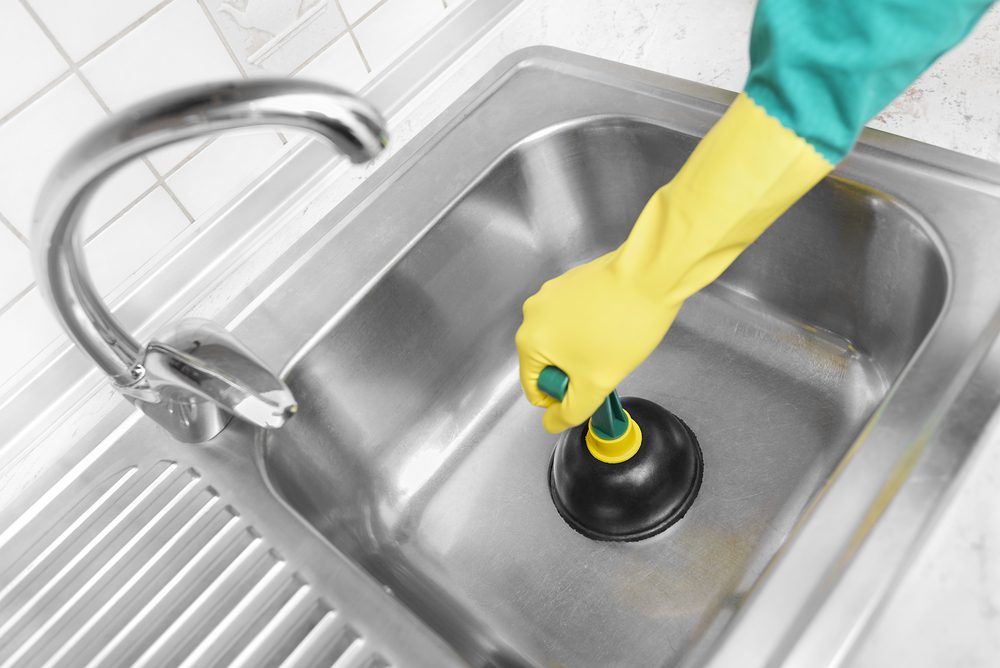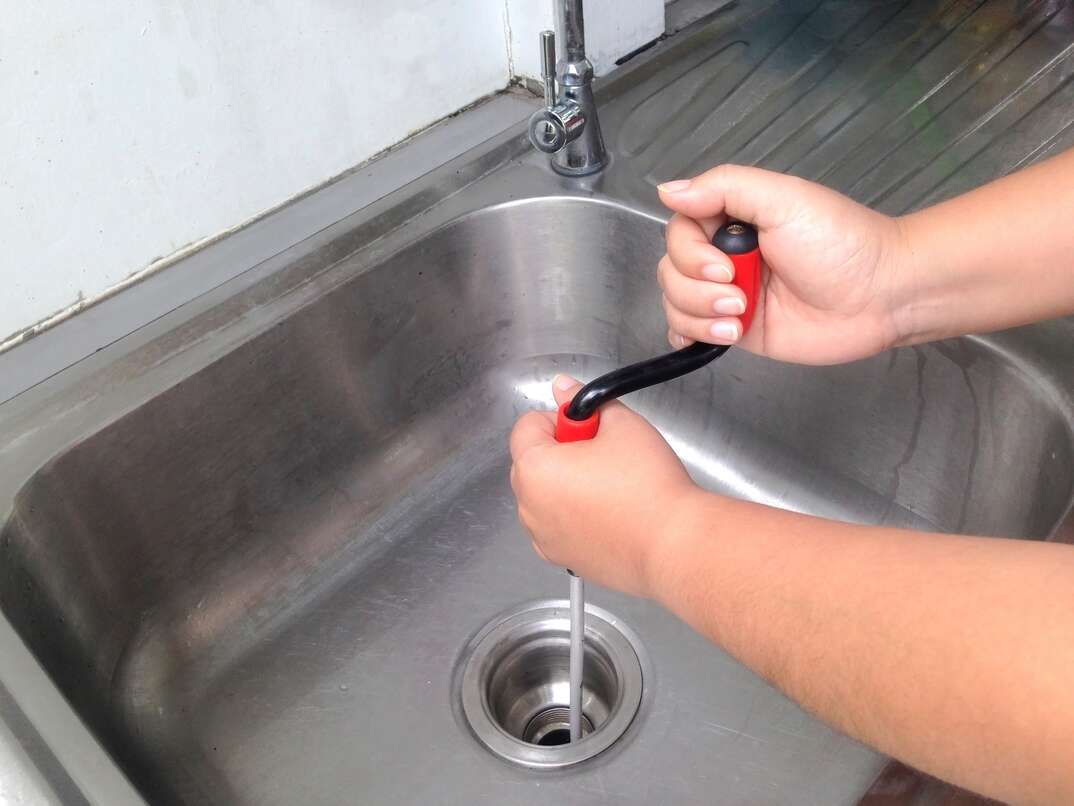Valuable Steps To Repair A Slow-Draining Sink
Valuable Steps To Repair A Slow-Draining Sink
Blog Article
They are making a number of good points related to How to Fix a Slow Draining Sink as a whole in this great article directly below.

Intro
We have actually all existed: You're cleaning your teeth or cleaning your hands, and you discover the water pooling in the sink. As opposed to promptly swirling down the drain, it remains, turning your once-refreshing early morning routine into a mini swamp scene. A slow-draining sink isn't just aggravating; it's frequently an indication of larger plumbing issues lurking beneath the surface area. The bright side is that most slow-draining sinks can be repaired with a little know-how, a couple of fundamental tools, and some perseverance. All set to tackle this task head-on? Let's roll up our sleeves and dive right in.
Recognizing the Sources Of a Slow-Draining Sink
Before you start poking around in your pipelines, it helps to understand what might be creating the downturn. Comprehending the root cause makes it easier to select the right solution.
Typical Offenders Behind Slow Drainage
So, what's obstructing things up? Generally, it's a mix of daily particles-- assume hair, soap residue, toothpaste residue, and leftover food fragments. Over time, these little bits gather and cling to the pipeline wall surfaces, gradually tightening the passage and making it harder for water to pass through. In some cases, mineral deposits from tough water can additionally contribute to the gunk, producing the best tornado for persistent blockages.
When is it Time to Take Action?
If you see the water draining slower than usual, it's an excellent idea to step in quicker instead of later on. Waiting too long could lead to complete obstructions, undesirable odors, and even pipeline damages. If the water takes more than a few secs to remove after shutting off the faucet, consider it a warning and prepare to place on your DIY hat.
Devices and Products You'll Need
The right tools make all the distinction. Fortunately, you won't need a totally equipped plumbing's van to finish the job.
Essential Devices for DIY Fixes
A bettor is your best beginning point. A little, sink-sized plunger produces suction that can remove minor clogs. For more consistent clogs, a drainpipe serpent (occasionally called a plumbing's auger) works marvels. A set of handwear covers, a flashlight, and maybe a set of protective goggles are additionally helpful.
Advised Cleansing Solutions
Mild meal soap and hot water can assist break down greasy build-up. A mixture of cooking soft drink and vinegar is a tried and true home remedy, and chemical cleansers provide an even more green method. Keep chemical drainpipe cleansers as a last option, as they can be severe on your pipes.
Security First: Preventative Measures and Preparations
Before you launch into unclogging mode, think of safety. You're managing possibly unclean water and debris, so slip on a set of handwear covers. If you're making use of chemical cleansers, make certain the area is well-ventilated and adhere to the guidelines on the tag.
Safety Equipment and Workspace Configuration
Put down some old towels or cloths around the sink area to capture splashes. Remove any items that could enter your method, like soap dispensers or toothbrush owners. Make certain you have good lighting-- order a flashlight if required.
Step-by-Step Guide to Dealing With a Slow-Draining Sink
Currently, let's get involved in the nitty-gritty. This detailed procedure will certainly guide you via easy techniques to recover your sink's water drainage.
Step 1: Eliminate and Tidy the Stopper
Typically, the stopper (that tiny plug you lower to obstruct water) is the initial wrongdoer. Remove it very carefully and clean off any kind of hair or gunk caught around its base. Wash it extensively before placing it back in place.
Step 2: Use a Plunger to Dislodge Debris
Got that bettor all set? Position it over the drain and give it a few company pumps. The concept is to create suction that can loosen up any blockage. If you see bits of debris drifting up, you get on the ideal track.
Action 3: Attempt a Drain Snake or Cable Hanger
If the bettor does not work, it's time to draw out the drain serpent. Carefully feed it into the drain and spin as you go. You might really feel some resistance-- that's likely the clog. Maintain twisting and drawing up until you remove the blockage. If you do not have a drain snake, a corrected the alignment of cable hanger can operate in a pinch.
Tip 4: Use a DIY Drain Cleaner
A natural cleaner made from cooking soda and vinegar can break down recurring grime. Put half a cup of baking soft drink right into the drainpipe, complied with by half a mug of vinegar. Let it fizz for around 15 mins, after that flush with warm water. This chemical reaction usually does wonders for minor blockages.
Step 5: Reconstruct and Evaluate the Sink
Placed whatever back with each other and run the faucet. Does the water currently swirl away at a commendable rate? If yes, offer on your own a pat on the back. If not, don't despair-- there are still a couple of even more dress up your sleeve.
Alternative Methods for Stubborn Clogs
Not all clogs are produced equal. If your sink still declines to coordinate, think about these alternative options.
Sodium Bicarbonate and Vinegar Method
We already touched on this, yet it deserves keeping in mind once again. This gentle, environment-friendly technique is safer than chemical cleansers and frequently quite effective.
Chemical Drain Cleansers
Enzyme-based cleaners make use of all-natural bacteria to absorb raw material. They're an exceptional choice if you're seeking to stay clear of severe chemicals. Simply bear in mind, they may take a bit longer to function their magic.
Chemical Drain Cleaning Company: Advantages And Disadvantages
Chemical cleaners can blow up with difficult clogs quickly, yet they're not without drawbacks. They can generate warm and fumes, damage pipelines if made use of exceedingly, and present ecological risks. Utilize them sparingly, and always adhere to the instructions meticulously.
Safety Nets to Maintain Your Sink Flowing
Prevention is the best treatment. By adopting a couple of straightforward behaviors, you can maintain your sink from slowing down to begin with.
Routine Cleaning Behaviors
Wipe down the sink container and fixture location consistently. Eliminate hair or food particles prior to they have a chance to wash down the drain.
Preventing Dangerous Materials Away
Reconsider before disposing coffee premises, grease, or fibrous vegetable scraps down the sink. These perpetrators cling to pipeline walls, developing obstructions in time.
Routine Upkeep Checks
Schedule a fast regular monthly inspection. Run warm water with the sink for a couple of minutes, paying attention to the flow. If it appears sluggish, act quickly prior to it becomes a full-blown obstruction.
When to Call a Professional Plumbing Technician
Sometimes, no matter exactly how difficult you try, that block just won't move. That's when it's time to generate the pros.
Signs That Indicate an Extra Major Issue
If your sink drains slowly in spite of several efforts, or if you see water supporting in other components (like your shower or commode), you might have a much more severe pipes problem prowling much deeper in the system.
Balancing DIY Initiatives with Professional Help
While DIY can conserve you cash and provide a feeling of achievement, there's no shame in calling a professional. An expert plumbing technician can evaluate your whole plumbing arrangement, guaranteeing there's no underlying damages or long-lasting issue that can cost you much more later on.
Comparing Costs and Long-Term Solutions
Before choosing, take into consideration the big picture. An inexpensive, quick fix may resolve the trouble briefly, but buying an extra irreversible option might conserve you money and anxiety over time.
Considering the Expenses of DIY vs. Expert Solutions
DIY fixes typically set you back little bit greater than the cost of a plunger or a container of baking soft drink. Expert services, on the other hand, featured a price however may protect against repetitive problems and pricey fixings later.
Purchasing Quality Fixtures and Upgrades
If your sink's design contributes to frequent blockages, it might be worth updating to higher-quality components or altering the pipes design. Consider this an investment in your house's performance and convenience.
Final thought
A slow-draining sink can feel like a small irritability, yet it's commonly a sign that your plumbing requires a little tender loving care. By comprehending the origin, utilizing the right tools and strategies, and dedicating to easy safety nets, you can keep your sink moving freely. And when all else stops working, never ever think twice to employ a specialist-- your home's plumbing is worth the financial investment in care and maintenance.
Three Common Ways to Fix a Slow Drain
Baking Soda Method
Boil a full pot of water. Measure out cup of baking soda and pour it down the drain. Then take cup of the magical cleansing substance known as white vinegar and drop that down there too. Allow the mixture to fizz in the drain for five minutes as the vinegar and baking soda combine. Now dump in that whole pot of boiling water. This combination of cleaning substances should clear out anything that is causing your sink to drain slowly. If it doesn t...
Zip-It
If the baking soda method doesn t clear out your drain, it may be because a significant amount of hair and/or other debris has collected there and you need to remove it. Purchase a Zip-It tool at any home improvement or hardware store and insert it into your drain. It will catch any collected hair or debris that s blocking the flow of water. Pull it out. If it s got a big clump of hair, etc. on the end, you ve probably got your culprit.
Drain Cleaner
If these methods don t work, there is the standard drain cleaner that you can also buy in a hardware store or even your local grocery store. It s better if you can use a household solution, but these drain cleaners often work in a pinch. They re very simple to use. You generally just dump them in your drain and wait. If even this method is not effective, it may be time to call the plumber.
https://www.mrrooter.com/oneida/about-us/blog/2017/july/three-common-ways-to-fix-a-slow-drain/

As a devoted reader about Three Common Ways to Fix a Slow Drain, I assumed sharing that segment was worthwhile. Sharing is good. Helping people is fun. I truly appreciate your readership.
Schedule A Service Call Report this page